How long do Ball Pythons live? In captivity, often over 20 years. As keepers, it’s our responsibility to maintain good husbandry that helps them live that long…
In the wild, Ball Python longevity is variable because of factors like disease and predation. In captivity, however, they can easily live between 20 and 30 years with good care. Occasionally, they even make it to 40 or 50. The oldest individual so far lived to 63, and even laid eggs at that age!
How long do Ball Pythons live in the wild?
Wild longevity is hard to predict due to predation. Healthy animals can be picked off by raptors, other reptiles, and predatory mammals at any age. This is probably why ball pythons are so shy – they aren’t particularly scary and make for easy targets.
In addition to predators, wild Ball Pythons are also affected by seasonal hardships such as drought and variable parasite loads.
In general, how long a python lives in the wild will depend on prey abundance and population density. If they must travel for miles to look for food or mates, they are evidently more at risk of predation.
If they live in a good location, however, with a good hiding place, abundant food, and low predation it is probably possibly for them to live more than 20 years in the wild.
It is no coincidence that Ball Pythons are often found in agricultural land in Ghana, Togo, and Benin. This type of habitat provides plentiful food and hiding places, hence its favour with shy snake species around the world, including some of our favourite pet species such as Milk Snakes.
Life in the wild vs life in captivity
Just how tough is life in the wild for reptiles? Well, let’s take a look. Below is a table giving us a quick run down of how life in the wild is different to life under ideal captive conditions. Remember, just how easy captive life can be depends on us…
| Wild Ball Pythons | Captive Ball Pythons |
| eat live prey – and may get bitten | eat frozen-thawed rodents |
| regularly catch internal parasites | never catch them when fed frozen-thawed |
| regularly catch external parasites | rarely catch external parasites |
| may be killed by predators | have no exposure to predators |
| breed every year | only breed when healthy enough |
How long do female Ball Pythons live?
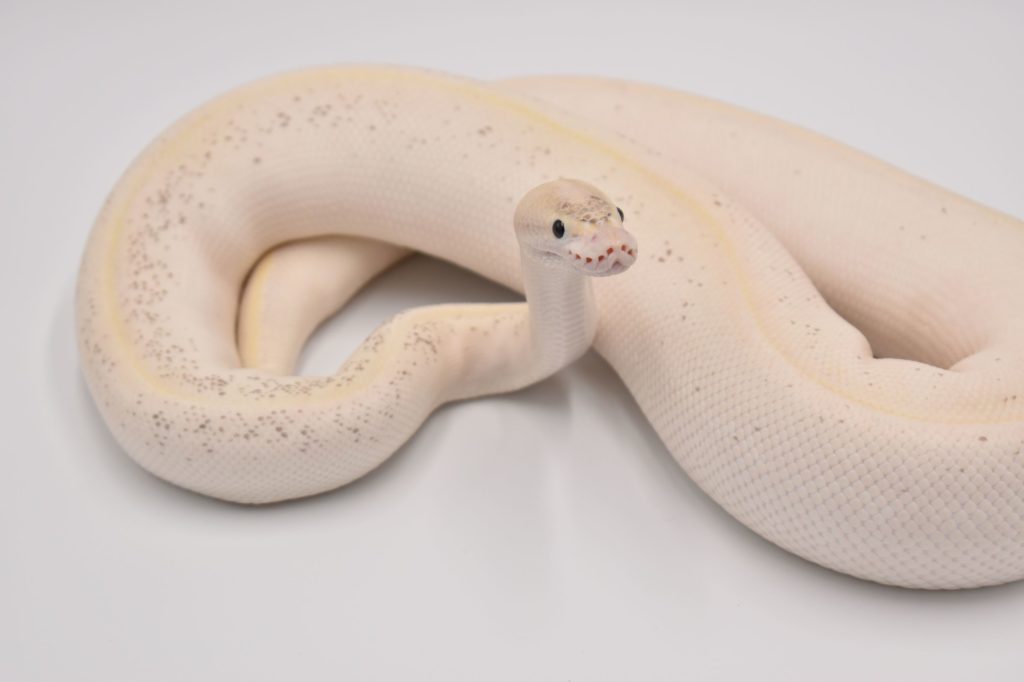
Good question! In many species of reptile – Ball Pythons included – males will go a long way to search for females. Generally, this wandering around puts them more at risk of predation and gives them a shorter life span.
What we know from studies like this one is that male Ball Pythons have a higher parasite load in the wild, probably (though not definitely) due to searching for females. Yet there is no conclusive evidence I’m aware of that proves a difference in longevity between sexes.
This may be because female Ball Pythons go through the hardship of maternal incubation. During this process, they coil around their eggs to protect them from desiccation. Unfortunately, they don’t have the body mass required to shiver and warm their eggs like other species of python.
Instead, if the eggs get too cool, a female Ball Python must go out into the sun to heat up, and then return to transfer this heat to the eggs. This can occur if a female lays her eggs in a very deep rodent burrow, for example. A behaviour such as this is highly risky and directly exposes the nocturnal snake to diurnal predators.
We may not know for certain for years, but it is likely both sexes have a similar lifespan in the wild due to this equal share of risk-taking during reproduction. In captivity, neither of the factors mentioned above is a problem. You can expect both female and male ball pythons to live at least 20 to 30 years with proper care.
From my discussions with fellow keepers and breeders, a difference in longevity between captive males and females is not apparent.
How long do Ball Pythons live in captivity?
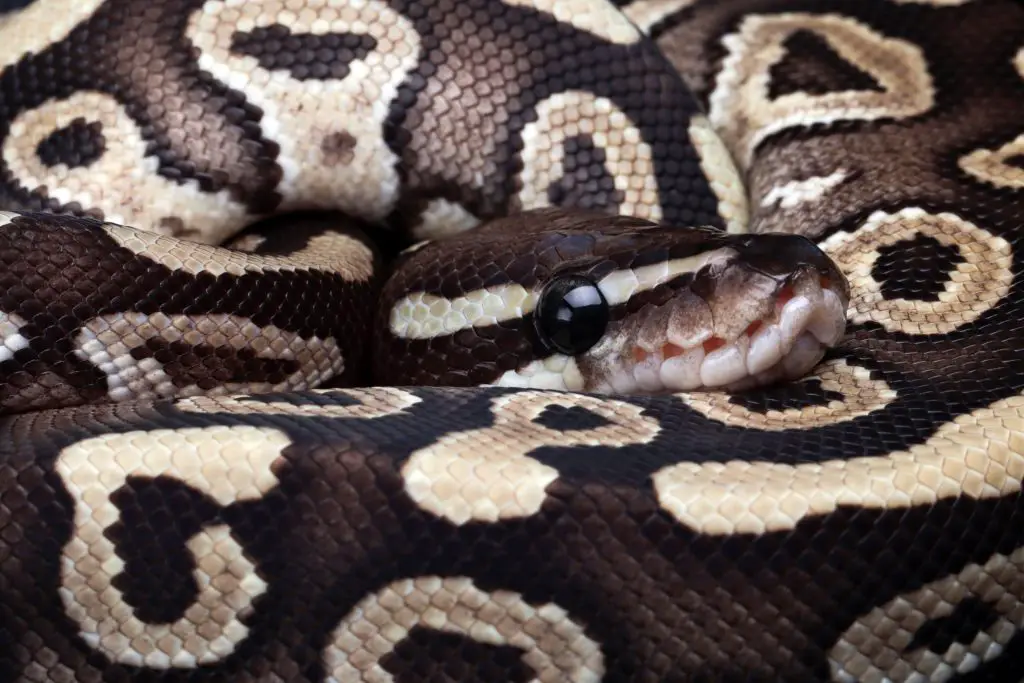
As I mentioned earlier, ball pythons can easily live to 30 years old in captivity, and even into their 40s. We’ve also just discussed the fact that males and females probably live to a similar age.
These numbers should come as no surprise, given that most reptiles have a slow metabolism and excellent longevity when compared to us mammals. In fact, you don’t have to be a Zoologist to keep a ball python alive into its late 30s, anyone can do it.
Nonetheless, captive longevity isn’t a given: it depends on five main factors that we as keepers need to get right. Let’s go through them so that we know how to give our pets a long, healthy life.
Five factors that affect lifespan in Ball Pythons
1. Temperature

As you probably know, reptiles as often referred to as “cold-blooded”, or ectothermic. Whilst this isn’t strictly true, it is close…
Reptiles are in fact poikilothermic, meaning that they are unable to generate consistent body heat like mammals. Instead, they use naturally occurring warmth to regulate their metabolism. This warmth can be found in objects heated by the sun, or in burrows that retain the day’s warmth at night, for example.
Being poikilotherms, reptiles can withstand some variation in their internal temperature but are dependent on external heat to maintain their metabolism and immune system at optimum levels.
In essence, this means that Ball Pythons kept at the wrong temperature – especially if it is too cool – are much less able to fight off infection.
If you want a Ball Python to live a long time in captivity, you need to provide correct temperatures and measure them regularly.
Don’t forget that infrared thermometer guns, like the one in the photo, are much cheaper than they used to be. These can be used to double check the temperatures in your Ball Python’s enclosure without disturbing it.
Personally, I use a digital thermometer with its probe placed under the warm spot to get a constant reading of each snake’s temperature. I then use a thermometer gun to check the cool end of the enclosure and occasionally double check the reading from the digital thermometer.
2. Hygiene
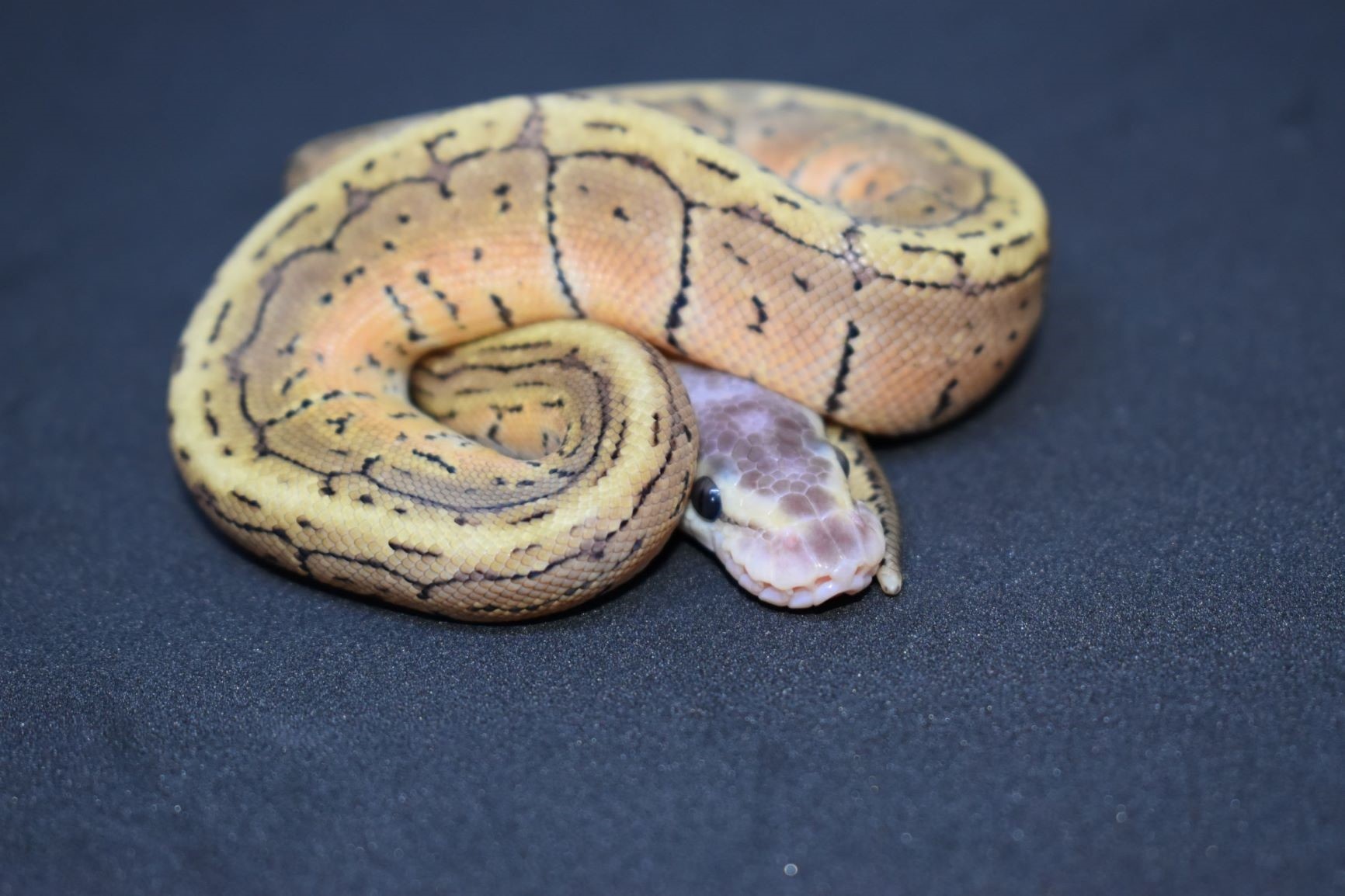
In addition to correct temperatures, you also need to provide appropriate hygiene for your snake. Ball Pythons can suffer from a range of infectious diseases, from Respiratory Infections to Scale Rot (Necrotizing Dermatitis).
Though their symptoms differ, what the above diseases have in common is that they are mostly opportunistic. They set in when a Ball Python’s immune system has become dysfunctional or overwhelmed.
The best way to avoid this situation is to think of your Ball Python’s enclosure as a container for germs. In this container, your pet can’t escape the germs that are present – its immune system has no choice but to deal with them.
By thinking in this simplified manner, we quickly come to a logical conclusion: the fewer germs in the enclosure, the less work there is for your snake’s immune system.
Keep a regular cleaning schedule where the substrate is completely changed and the whole enclosure is cleaned with disinfectant. Doing this will keep the bacterial and fungal load in the enclosure at safe levels and make infections of any kind much less likely.
I recommend removing any messes immediately and doing the kind of cleaning I mention above once every two months. Water bowls should be cleaned and disinfected every 3 to 4 days.
3. Safety
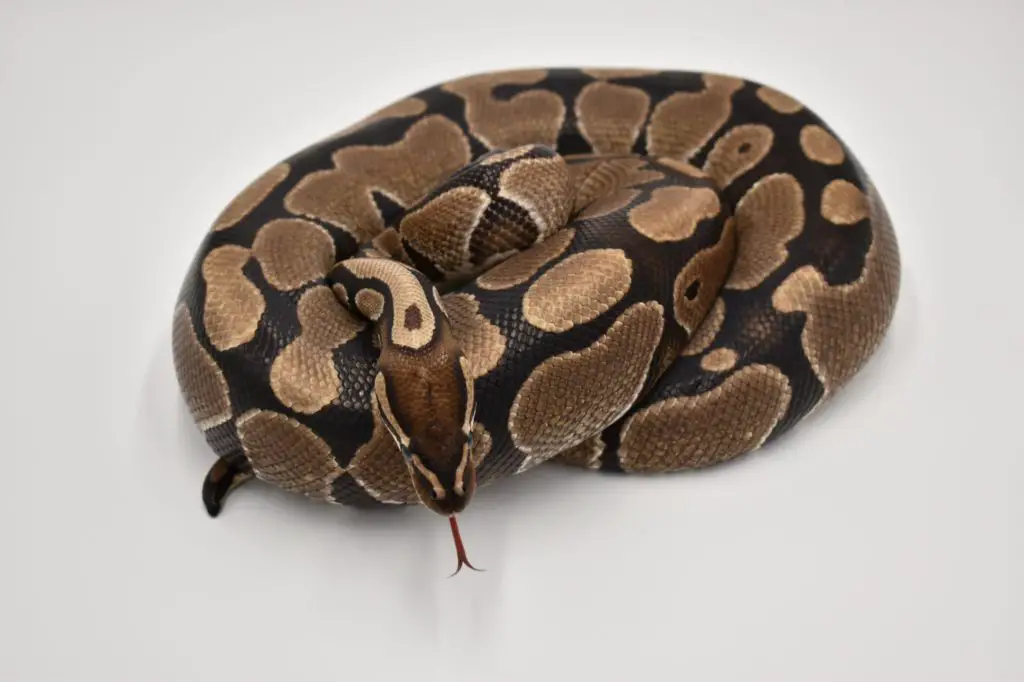
This factor is talked about surprisingly little. It should go without saying though that an enclosure should be a space where the animal is safe from injury.
In my experience, the two most common injuries to Ball Pythons are nose rubs from rough objects or screening and burns from heating elements. Both injuries can of course lead to infection, and sometimes even an early grave.
Many years ago, I made the foolish mistake of giving Bobby, in the photo below, an enclosure with a slight lip around the underside of the lid. Unbeknownst to me, this provided a space Bobby could cram his snout into. So, being a snake, he of course went and did it.
Generally, he is very much on the lazy side and has no interest in escaping. But this time I think the scent of the females in the room, some of which were breeding, put a little flame under old Bobby…
Sure enough, he developed a little bump on the underside of his jaw from trying to escape and get to the ladies. I put him through a course of antibiotics and replaced his enclosure with a new one.
In total, I think it cost me over £300 ($400), all because I hadn’t inspected a new enclosure thoroughly enough! Bobby was totally fine in the end, but the whole episode certainly taught me a lesson.
4. Diet

If you’ve read my post on whether Ball Pythons need vitamin supplements, you’ll know how important it is to provide healthy, well-raised rodents for them to eat. You can also give them the occasional chick as a treat.
Acceptable prey items include:
- rats
- mice
- multimammate mice
- gerbils
- chicks
Out of these options, rats seeem to be best at promoting healthy growth to adult size, though multimammate mice also work if you can them in xl or xxl sizes.
For full health and longevity, however, this isn’t the whole picture. Once Ball Pythons reach full size, you also need to monitor them for obesity. In general, they are fully grown by around 3 to 4 years old, and their metabolism starts to slow down.
In some animals, particularly males, obesity is never a problem. They simply get into a cycle of fasting during the latter part of the breeding season and stay trim all year round.
Prince, for example, my male Pewter Ball Python, fasts for around 6 to 8 months each year and maintains a healthy, streamlined body condition. I can literally offer Prince food each week or so and trust him not to over-eat.
Notwithstanding, many Ball Pythons seem to eat all year round, particularly if they don’t breed. Bobby, who we discussed earlier is one such animal. If I fed him as much as he’d like, he’d look like a sausage by now. To keep him trim, Bobby is on a diet of one large weaner rat a month and has regular weigh-ins.
Whilst it may sound cute, obese pythons are very prone to heart disease, which of course shortens their lifespan – sometimes drastically.
My advice is to weigh adult snakes at least once every three months. If their weight is creeping up (and they aren’t breeding), it generally means their metabolism is slowing down with age and they require less food.
5. Humidity
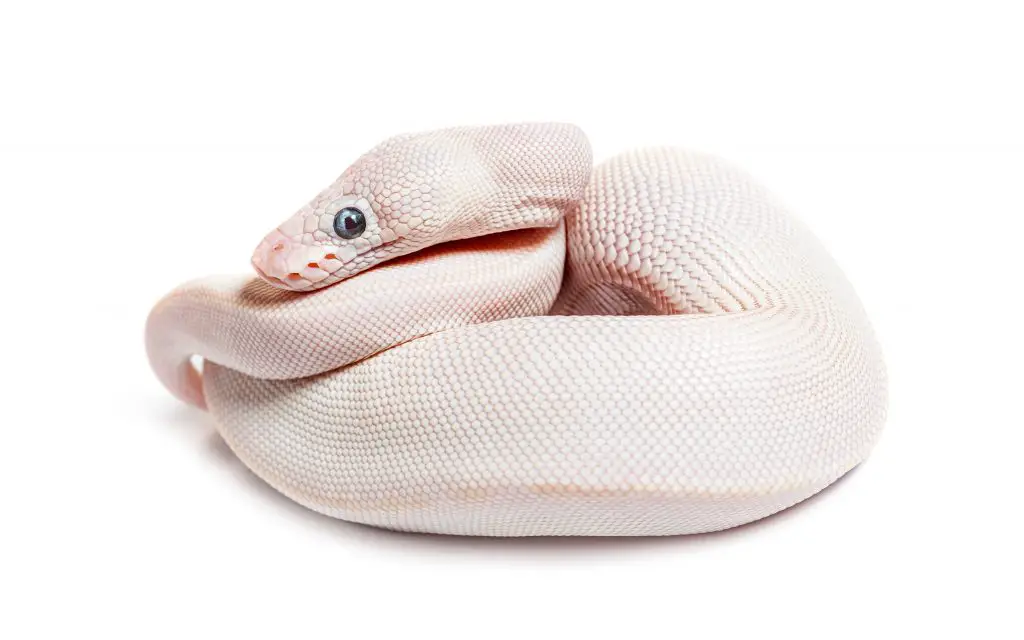
Though it doesn’t have a direct affect on the functioning of their immune systems, humidity does play a big role in preventing disease. Every reptiles species has a set humidity range that it has evolved to live with.
For Ball Pythons, this is 55-65%, except for during shedding, when it can be temporarily raised to 80% to help with the process. In this humidiy range, the lungs and skin of your snake will remain healthy and resistant to infection.
If humidity gets too low, the main effect is that it makes it harder for your snake to shed its skin, and this results in stuck shed and even stuck eye caps. Interestingly, there is also some evidence to suggest that low humidity can harm lung health too, though perhaps not quite as muc has excessively high humidity.
For its part, high humidity causes rapid microbial growth in the enclosure and makes conditions like scale rot and respiratory infections much more likely.
How long do Ball Pythons live? Conclusion
Ball Pythons live a long time in captivity, often more than 30 years. With a little luck and perfect conditions, your Ball Python could reach 50 or older!
In the wild, predation and other hardships obviously limit their longevity. In captivity, on the other hand, it’s all down to us.
To give a Ball Python a long, healthy life you need to commit to its care daily. It isn’t hard, but the four factors of temperature, hygiene, safety, and food need to be correct. Pay attention to these days after day, month after month, and year after year if you want a long-lived pet.
This may sound like a big commitment, and it is. The truth is Ball Python care is very easy, but it’s a long-term thing. Nonetheless, it’s worth it. They’re great pets, and I’ve been living with them for over 20 years.
If you’re new to the hobby, however, this decades-long commitment is something to reflect on before buying your first ball python.

FAQ related to Ball Python lifespan
How long do ball pythons live as pets?
How long your Ball Python lives will depend on the husbandry you provide. If you give your pet correct, stable temperatures, a good diet, and an appropriate enclosure it will probably live to 20 or more. You should also pay close attention to its hygiene by regularly cleaning its enclosure and water bowl.
How long does a ball python female live?
Female Ball Pythons generally live between 20 to 30 years in captivity – just like males. Though they are larger than males on average, the differences stop there. Male and female Ball Pythons reach a similar lifespan and have the exact same care requirements. The only difference is that a female may need a larger setup.
Are ball pythons hard to keep alive?
Ball Pythons are not hard to keep alive. In fact, they are very hardy, easy-to-maintain animals that do well if you get their core husbandry requirements right. The main illnesses they get are Scale Rot and Respiratory Infections. Both of these are often caused by poor hygiene and excess humidity, making them 100% preventable.
What is the oldest ball python ever?
The oldest Ball Python so far recorded was 63 years old in 2021, and lives in the St. Louis Zoo. This female was in such good health that she even laid eggs through parthenogenesis at the age of 62. This is of course a great example of just how long the reproductive lives of these snakes can be.
Also on this topic:
- How often should I clean my Ball Python’s enclosure?
- Ball Python Scale Rot: How to understand and treat it
- Ball Python noises *Includes information on diagnosing Respiratory infections
- Can I take my Ball Python outside?
- Can I leave my Ball Python alone for a week?
- Do Ball Pythons sleep?
For more on Ball Python health:
Back to the Ball Python health and illness page
